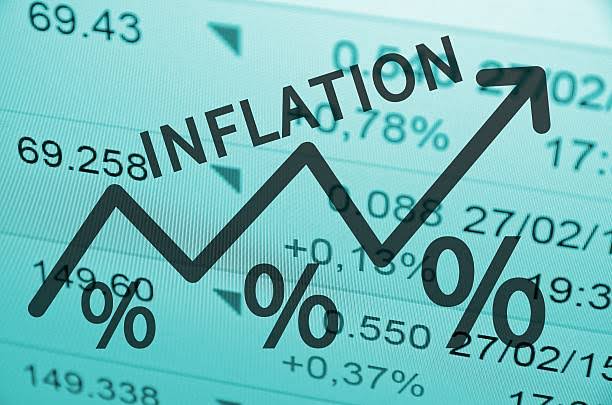As the RBI’s focus is entirely on the management of inflation, borrowers will get further hurt.
By Sajjad Bazaz
So, in line with the market expectations, the Reserve Bank of India (RBI) in its August 2022 Monetary Policy hiked the repo rate by 50 bps to 5.40 per cent. It’s the third consecutive rate hike in 2022. So far, this short-term key lending rate has witnessed 140 bps hikes since May 2022.
The repo rate is now above the pre-pandemic level, which was 5.15%. During the peak Covid times, the RBI slashed the repo rate to 4% at different stages.
The hike has been pitched by the RBI as an arsenal to control inflation in the country. The retail inflation has remained above 7% for the last three months but has eased from an eight-year high of 7.79%, hit in April.
Notably, the Monetary Policy review has put out inflation forecast for remaining three quarters of the current financial year at 7.1 per cent for period between July – September (Q2); at 6.4 per cent, for period between October – December (Q3); and at 5.8 per cent for the last quarter Q4 (January to March 2023). Even the inflation forecast has been pegged at 5 per cent for the first quarter (Q1) of the next financial year 2023-24.
Interestingly, RBI’s stand on key interest rates not only keeps experts alive with their predictions and analysis, it has, over a period of time, attracted common man’s attention. Actually, it is the fast financial intermediation even into unreached areas which has changed the economics of thinking preferences of one and all. Now people keenly follow every spell of stance of monetary policy whenever the apex bank announces it. People today are keen to know more about percentages of cash reserve ratio (CRR), Repo & Reverse Repo rates than the prices of essential commodities.
Interestingly, the rate of interest (RoI) dominates the financial system and each player in the system remains focussed on the percentage of interest they have to pay or receive. Before deliberating upon certain aspects of the current monetary policy announcements, it would be interesting to understand the origin and concept of the rate of interest (RoI).
Tale of Interest Rates
Basically, the origin of the banking and financial system is full of tales. Financial contracts are reported to be as old as written language. Economic historians sum up that writing appears to have been invented for the purposes of recording financial deals. Where did the idea of borrowing and lending come from? How did the idea of interest payments evolve?
Even as implementation of the concepts in the financial system have undergone a sea change, the basic architecture of the functions of the banking system is intact even today. If deposits and loans and advances form the pillars of this financial architecture, it is the Rate of Interest (RoI) which is the life line not only of the banking system but of the whole growth process taking place in the economic cycle. Remove this RoI component from the system, you won’t find depositors. Thus, leaving no scope to lend, which means money won’t multiply.
So, it’s the Rate of Interest that generates flow of money from sector to sector and place to place, ultimately resulting in economic development of societies.
Let me share an interesting piece of information. Loans in the pre-urban societies were made in seed grains, animals and tools to farmers. Since one grain of seed could generate a plant with over 100 new grain seeds, after the harvest farmers could easily repay the grain with interest in grain. Also, since just so much seed grain could possibly be used, there were natural limits to this lending activity. When animals were loaned, interest was paid by sharing in any new animals born. What was loaned had the power of generation, and interest was a sharing of the result. Interest on tool loans would be paid in the product which the tools had helped to create.
In his Ancient Economic History, for instance, Heichelheim believed that this kind of lending occurred as early as the neolithic age, with early food-money and credit being linked by about 5000 BC: “Dates, olives, figs, nuts, or seeds of grain were probably lent out . . . to serfs, poorer farmers, and dependents, to be sown and planted, and naturally an increased portion of the harvest had to be returned in kind.” In addition to fruits and seeds, “animals could be borrowed too for a fixed time limit, the loan being repaid according to a fixed percentage from the young animals born subsequently.”
Today, basic principles of the Interest component remain the same. However, its implementation methodology has undergone change. At the moment banks and financial institutions have triggered interest rate wars to woo depositors as well as borrowers.
Repo Rate Impact
Repo rate, over a period of time, has become a household term as its impact is directly on the domestic budgets. The movement in this policy rate decides the cost of loans (in terms of rate of interest) for the retail borrowers. As the repo rate stand hiked by 140bps and crossed the pre-pandemic level, popular retail loans like housing loans, car loans, personal consumption loans, business loans etc. will be now more expensive. The equated monthly installments (EMIs) of the existing borrowers will go up and they will have to shell out more to fall in line with the revised rate of interest. The impact will be equally on the new borrowers as the cost of loan will shoot up.
Matter of Concern
These back-to-back repo rate hikes in a span of three months, the RBI has started showing its focus entirely on the management of inflation, which is the most worrying situation as prices of essential as well as non-essential commodities are spiraling out of hand.
Notably, core inflation has already breached the Reserve Bank’s targeted range of 2%-6%. Currently, it stands above 7%.
Generally, common understanding about inflation is that it occurs when there is more demand than availability of the supply. And this gap in demand-supply leads to price rise. However, there are abnormal factors too that trigger inflation to higher levels. In such abnormal situations, controlling the inflation and bringing it to acceptable levels is a real challenge to the central bank of any country.
Since 2020, we have faced (and continue to face) two unprecedented abnormalities in Covid-19 pandemic and the Russia-Ukraine war. Both have wreaked havoc on the global economy, leaving apart the destruction caused on the health front where millions of lives were lost. First it was the pandemic which not only broke global economic chains but also forced economic lockdowns across the global geographies. Millions lost their jobs and millions of others faced drastic cuts in their household incomes. Secondly, the outbreak of the Russia-Ukraine war at a time when the global economy was in a recovery mode, derailed the momentum and fuelled the inflation in the danger zone.
The run-of-the-mill approach to tame this kind of inflation has proved a futile exercise and wastage of resources and time. This forced the central banks to print money in a bid to trigger economic recovery which was badly hurt by pandemic-induced lockdown. Lowering the policy rates, such as the repo rate, was used as another tool to tame the rising inflation.
Reports reveal that in peak Covid times, when the economy was in shambles, central banks printed record amounts of money, which led to the amount of money chasing a small number of goods increasing. In this scenario, the prices of essentials as well as non-essentials witnessed an upward trend.
Meanwhile, if we look at the higher interest rate scenario, we see growth taking a pause as there will be slowness in the economy. In the war against inflation, the rate hike in retail loans will further hurt the borrowers as their household budgets have already received set back due to the spiraling prices of essentials and non-essential commodities.
Sajjad Bazaz heads Internal Communication & Knowledge Management Department of Jammu & Kashmir Bank Ltd. The views expressed are his own and not of the institution he works for.


